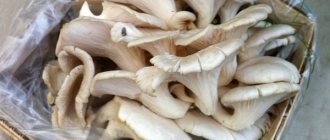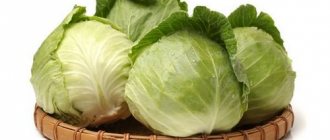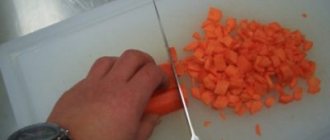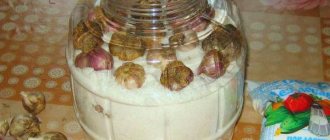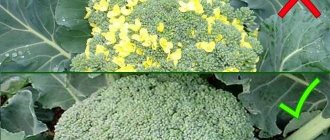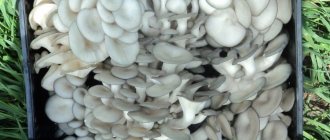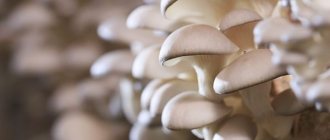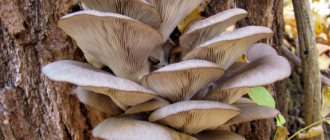No one will dispute the benefits and nutritional value of oyster mushrooms for the human body. These mushrooms contain a large amount of amino acids, proteins, fats, carbohydrates, vitamins B, C, E. They can remove heavy metal salts, as well as radionuclides, from the intestines.
Oyster mushrooms are considered one of the most popular mushrooms. Quite varied and healthy dishes are prepared from them. Our grandmothers also successfully used processes that made delicious mushroom preparations. If we talk about oyster mushrooms, they were dried, boiled, stewed, fried, fermented and pickled for the winter. Today, similar procedures are also widely used among most Russian families. In addition, freezing has recently become a popular option for preparing mushrooms. And the age of high technology makes it possible to prepare mushrooms for future use, while preserving their freshness and aroma.
Oyster mushrooms can not only be collected in the forest, but also simply bought in a store at an affordable price. In addition, these fruiting bodies are considered not only a delicious product, but also a dietary one. It must be admitted that the taste of oyster mushrooms differs from other mushrooms and is very similar to the taste of chicken meat.
Oyster mushrooms: description and photo
Oyster mushroom or, as it is popularly called, oyster mushroom, is an edible mushroom of the oyster family. It is widespread in temperate forests. It grows in groups on stumps, dead wood and trunks of deciduous trees. Their number in a group can be 30 or more fruiting bodies, which grow together at the base, representing a kind of “bouquet”.
The fungus itself is a pest for trees, as it causes yellow rot in them. The more rot that forms, the more oyster mushrooms can be found in that area. If a tree dies due to infection, they can continue to grow on it, which is why this fungus is considered to be predatory.
Oyster mushroom is edible and does not pose a threat to the human body; it also has no resemblance to poisonous species.
The specimens grow large, the diameter of the cap can reach 10 cm. It feels dense, fleshy, has a thin edge, and the general shape is round. Age can be determined by the shape of the cap - if it is convex, then the mushroom is young, and if it is flat, then it is old. The color can vary from yellowish to ashy with a purple tint.
The leg is usually short. Often you may not even notice it under a large hat. The pulp is juicy, white and dense. Over time, it becomes tougher and more fibrous. It has practically no smell. The taste, according to many reviews, is soft and pleasant. May resemble anise. This is due to the benzaldehyde content in the chemical composition.
Did you know? In terms of protein content, oyster mushrooms can be compared to dairy products or meat. This figure is 2.5 g per 100 g.
Preparation
Optimal storage conditions for oyster mushrooms are temperature from +2 to +10 °C, good ventilation and free distribution in prepared containers. But special attention should be paid to preparing mushrooms for storage. First of all, they need to be cleaned properly. Otherwise, the mushrooms will become watery and lose their nutrients.
Considering that oyster mushrooms grow on trees, there is practically no dirt on them. Therefore, they do not need to be soaked. Sort through the mushrooms, remove any wormy or spoiled ones. Even minor damage can cause damage to all neighboring mushrooms. Divide the oyster mushrooms into small piles. Place each of them in a colander and rinse under strong running water. Place the washed pieces on a board or plate and dry slightly. Further actions will depend on which storage method you prefer and for what dishes the mushrooms will be used.
When and where to collect
Collection time is from September to December. In European countries and Russia they grow actively throughout the fall. Oyster mushrooms love low temperatures and appear after cold snaps. They can also grow in summer if the temperature is low for a long time. In different regions, the collection time may also fall in the spring.
Many mushroom pickers make a mistake when they go in search of this mushroom - they, as in a normal search, habitually look at their feet, while they need to look up and to the sides. Oyster mushrooms are located on tree trunks, which is where they get their name - they grow in a suspended state. Most often, they choose a birch tree as a place to grow. This is their favorite tree.
But you can find them on aspens, willows, and even pine trees. Coniferous trees rarely fall prey to this predator, but when searching, it is recommended to inspect all trees. If you decide to go collecting oyster mushrooms, then it is best to go to a deciduous forest in the fall. But there is a chance to meet them almost everywhere and at almost any time of the year.
Important! When harvesting, cut off the entire group, even the smallest fruiting bodies. They will not survive if their larger neighbors are cut off.
Salting
Salting can be done hot or cold. When cold salting, mushrooms are washed and soaked in a salt water solution for 6 days (Figure 6). The water needs to be changed every day, otherwise they will become bitter.
Figure 6. Salting at home
When hot salting, the product is first boiled in salted water for 15 minutes, after which it is placed in jars, sealed with nylon lids and stored in a cool place with a temperature of no more than +8 degrees.
The salting process is shown in detail in the video.
How to process oyster mushrooms after harvesting
After collection, they need to be processed as soon as possible, since this product is perishable. The whole process can be divided into the following stages:
- Screening . First of all, the crop needs to be inspected. Old, wormy, rotten, damaged, frostbitten or moldy specimens should be thrown away. The presence of mucus is also a signal that the mushroom is unfit for consumption.
- Sorting . Depending on the type of subsequent preparation, the harvest is sorted by size and quality. To do this, the groups must be divided into separate instances. Small dense fruiting bodies are well suited for any type of preparation. Larger and older ones can be identified for boiling and frying.
- Cleaning . Excess debris and insects must be removed from the surface of the caps and bodies. A hard sponge is often used for this purpose, but you can also use a knife. It is recommended to cut out minor darkening and damage.
- Washing . This procedure is not necessary if the harvested crop is intended to be frozen or dried. In other cases, such cleaning is necessary.
Storage in plastic containers
The most suitable container for storing boiled and fresh mushrooms in the freezer and refrigerator is a plastic container. In such containers they are practically not damaged and retain their integrity. For this method of storing food, small containers with a tight-fitting lid are suitable. The container size should be such that the portion is enough for one defrosting, since re-freezing is not allowed.
Drying is an effective and inexpensive way to preserve beneficial properties and taste. Drying in the oven should be done in two steps:
- Clean the mushrooms from dust and dirt, rinse under running water and place in one layer on a baking sheet. Dry for 8 hours in the oven. The drying temperature should not exceed 50 degrees.
- Then you need to transfer the tray with the dried raw materials to a dry room with a good ventilation system and leave it there for 48 hours.
- After 48 hours, the tray with mushrooms is again placed in the oven for 6 hours. The drying temperature is 70 degrees.
Properly dried mushrooms should not turn into powder at the first touch, but should break into pieces easily. In order not to overdry them, it is worth checking them periodically at the last stage of drying in the oven. For subsequent storage, they are slightly cooled and packaged in small glass jars.
Don't worry if you dry out the product. You can make a powder from the dried product by grinding it in a mortar or coffee grinder.
How to prepare oyster mushrooms for storage
If the harvested crop is to be stored, then it should not be washed. If excessive contamination occurs, a short rinse under running water is allowed. After this, the mushrooms need to be dried before storing. It is important to place the fruiting bodies in airtight containers as they tend to absorb odors.
Did you know? The record number of these fruiting bodies in the group was 473 pieces.
In addition, in an open container there is a possibility of chapping and drying out the contents. The bottom of the container can be lined with paper or a paper towel. The thickness of the layer in which they are laid should not exceed 20–25 cm, otherwise there is a risk that the lower rows will wrinkle. They need to be laid evenly, leg to leg, if they have not been cut. You should also place a paper towel under the container itself.
Using an Electric Dryer
Some housewives, farmers or simply lovers of dry fruits/mushrooms/vegetables purchase equipment that facilitates and speeds up the process. If you have access to an electric dryer, simply peel the mushrooms, cut them into small pieces and place them in a special sieve installed in the device. Experienced people recommend maintaining certain temperature stages after turning on the equipment:
- For the first two hours, dry the product at a temperature no higher than +50 degrees.
- Starting from the third hour, increase the heat to 75 degrees, continue the process until the product is ready (from 8 to 13 hours).
Do not forget to check the degree of drying at least every hour, because if you overdo it, the fruiting bodies will become unsuitable for use - they will break and crumble. If the harvest remains under-dried, mold will begin to form on the fruits, and they will become impossible to eat.
Adviсe
Pay attention to the method of storing supplies; ideal conditions are a complete absence of humidity, foreign odors and insects.
Before using dry oyster mushrooms to prepare any dish, soak the required amount of mushrooms in clean water or milk (for about 60-90 minutes).
From 10 kilograms of raw mushrooms you will get approximately 1 kilogram of dried mushrooms, the mass of the product is reduced by 85-90 percent. Take this into account when planning your inventory.
So we looked at how to dry oyster mushrooms at home. Follow the advice received and enjoy this delicious forest delicacy all year round.
How long does it last in the refrigerator?
You can find the approximate temperature conditions and shelf life below:
- +7…+10°С – 12–17 hours;
- 0…+5°С – 24–72 hours;
- -2…0°C – 72–96 hours.
Manufacturing plants often use refrigerators that can maintain a constant temperature down to -2°C, which can extend their shelf life by up to 2 weeks. For longer storage, it is recommended to use deep freezing.
Storage Features
The success of refrigerated storage largely depends on the preliminary preparation of the product. Do not soak them under any circumstances, as this will lead to loss of taste of the product.
You can store these gifts of nature fresh, without cutting them into pieces.
To prevent the mushrooms from losing their appearance, they should be placed in a plastic container intended for food products, or each specimen should be carefully wrapped in paper. The packaging must be sealed. It is recommended to place a damp towel under it so that the product does not lose moisture. Under such conditions, the shelf life of mushrooms in the refrigerator is 5 days, but at a stable temperature (-2) degrees and the product is in a hermetically sealed container, the shelf life is extended to 21 days.
Many people wonder how long oyster mushrooms last in the refrigerator. It is worth noting that fresh mushrooms are not intended for long-term storage. Even if properly stored in the refrigerator, the shelf life of fresh mushrooms does not exceed 5 days.
If you want to extend the shelf life, you can do this by placing the product in the freezer rather than the refrigerator.
How much and how to store in the freezer
The freezer allows you to preserve your harvest for a long time without losing its taste and beneficial qualities.
Important! If defrosting occurs due to a power outage or other circumstances, mushrooms cannot be re-frozen. This will significantly degrade their quality.
To understand how long you can freeze for, you need to check the deep-freezing temperature conditions:
- -12…-14°С – 3–4 months;
- -14…-18°С – 4–6 months;
- -18…-24°С - up to 1 year.
Do not forget about preliminary preparation and proper packaging of fruiting bodies. No more than 1 kg should be stored in one container.
Now you know how to properly store purchased or collected oyster mushrooms. Follow the advice in this article, and these mushrooms will be able to delight you with their taste and benefits for a long time.
Pickling
There are two ways to marinate mushrooms. In any case, you will need a saucepan for marinating and jars in which ready-made dishes will be stored (Figure 7).
In the first method, vinegar, allspice, garlic or other spices are mixed in a saucepan. Bring the marinade to a boil, add mushrooms to it and cook for half an hour. After that, they are transferred to jars, filled with the remaining marinade and rolled up.
Figure 7. Pickling oyster mushrooms for winter storage
For the second method of pickling, mushrooms are first boiled in salted water, placed in jars, and then the marinade is prepared and poured with boiling liquid.
The difference between these methods is only in the duration of storage. The first method allows you to store mushrooms for a year, while with the second this period is no more than 6 months.
How to defrost correctly
There are several ways to defrost oyster mushrooms . You should choose based on the availability of free time, as well as based on the current situation.
- The most useful and correct method is slow defrosting. It takes a lot of time, but allows you to preserve the structure of the product and its taste. You need to put the bag of frozen oyster mushrooms in the refrigerator in the evening, and in the morning you can start cooking after they have naturally thawed. It is advisable to place them in a colander so that excess water can drain and the mushrooms are not watery. This may take approximately another 2-3 hours.
- Faster, but somewhat less useful, is defrosting mushrooms in the microwave. You need to set the defrost mode and heat the product.
- If the mushrooms were properly cleaned before freezing, then you can simply throw them into boiling water and boil them there. In this case, they will not take on a lot of excess liquid.
As you can see, freezing mushrooms at home is not at all difficult. Any housewife can cope with this task. Having spent very little time, you can successfully use such a unique semi-finished product during the winter to prepare various dishes.
No one will dispute the benefits and nutritional value of oyster mushrooms for the human body. These mushrooms contain a large amount of amino acids, proteins, fats, carbohydrates, vitamins B, C, E. They can remove heavy metal salts, as well as radionuclides, from the intestines.
Oyster mushrooms are considered one of the most popular mushrooms. Quite varied and healthy dishes are prepared from them. Our grandmothers also successfully used processes that made delicious mushroom preparations. If we talk about oyster mushrooms, they were dried, boiled, stewed, fried, fermented and pickled for the winter. Today, similar procedures are also widely used among most Russian families. In addition, freezing has recently become a popular option for preparing mushrooms. And the age of high technology makes it possible to prepare mushrooms for future use, while preserving their freshness and aroma.
Oyster mushrooms can not only be collected in the forest, but also simply bought in a store at an affordable price. In addition, these fruiting bodies are considered not only a delicious product, but also a dietary one. It must be admitted that the taste of oyster mushrooms differs from other mushrooms and is very similar to the taste of chicken meat.
How to choose the right mushrooms for freezing
Before putting oyster mushrooms in the freezer, you need to carefully select suitable mushrooms .
- At the time of purchase, you should inspect the product for yellow spots on the cap. If this occurs, then the mushrooms are not suitable for freezing, since during the cooking process their taste and smell will not be the most pleasant.
- It is also recommended to pay attention to the smell of mushrooms, which will be the most reliable indicator of their freshness. If there is a strong, unpleasant aroma, you should not buy the product.
- You also need to pay attention to the presence of cracks on the caps. If they are, then this will also indicate that the specimens are not fresh.
- The legs of oyster mushrooms contain a very small amount of useful elements; moreover, they are tasteless and most often hard. So you need to pay attention to how well the mushrooms were trimmed. The legs of high-quality oyster mushrooms should either be completely cut off or be very short.
- The age of an oyster mushroom can be determined by the size of its cap. Overgrown mushrooms are not as beneficial for the human body as young ones; moreover, they usually have insipid, fibrous flesh, which becomes almost “rubbery” after cooking. It is better to buy young mushrooms, which contain more vitamins. These oyster mushrooms are juicy and soft, and their flesh is white.
Methods for drying oyster mushrooms
If suddenly you have a lot of mushrooms that you cannot use now and you understand that they will simply disappear, then drying is a great option to save your mushrooms. So, there are 2 methods to save your mushrooms:
- Air drying.
- Oven drying.
Before choosing any of the 2 possible methods, you need to wash all the mushrooms and, if necessary, use a knife to remove any dirt that may have stuck to the mushrooms. Then each mushroom must be wiped. Cut the mushrooms in half. The legs are separate from the caps.
Then take a baking sheet and paper (parchment paper works great) and place the caps on the sheet. Drying should only be done in the shade, out of direct sunlight. It is advisable to choose a place that is well-ventilated for faster drying.
Dangerous treat
Warm and humid summers are conducive to mushroom picking. But every year there are reports of victims made by silent hunting. The body signals mushroom poisoning with the following symptoms:
- stomach ache;
- vomiting or diarrhea;
- strong thirst;
- muscle spasms and cramps;
- disruption of the heart;
- excessive excitement;
- rave;
- greatly dilated pupils.
In such circumstances, you should call a doctor, even if the symptoms of poisoning stop for a while.
Before his arrival, rinse your stomach by drinking several glasses of salt water, which should induce vomiting. Do not drink milk or alcohol. Remains of vomit or food should be saved for laboratory diagnostics to identify the bacteria that caused the poisoning. It must be remembered that gastric lavage a few hours after eating a mushroom dish is no longer effective, and often only then do symptoms of poisoning appear.
Mushrooms are not valued by nutritionists because they consist mainly of water and have the ability to absorb heavy metals. In addition, they are difficult to digest. They are disliked due to the short shelf life of food prepared from mushrooms and the high probability of poisoning due to toxic substances during long-term storage in the refrigerator. However, there is no such force that could scare away gourmets from fried butter with onions, pickled chanterelles and aromatic mushroom sauce made from porcini mushrooms.
Salted mushrooms: how to store at home
Mushrooms are a perishable product. They, like all plants, die and deteriorate in the absence of food. This process cannot be stopped. As the mushroom dies, it begins to produce toxic emissions that are very dangerous for people. But the initial stage of decay is very difficult to recognize. When a buyer goes to the supermarket and buys white lumps of champignons, he does not pay attention to their appearance.
It is believed that the products in the store are fresh and safe. But this is far from true. Mushrooms begin to deteriorate a few hours after entering a warm room. Therefore, when choosing oyster mushrooms or champignons, pay attention to how they look. With brown spots on the cap, black grille and mucus, unfit for consumption.
Dried mushrooms are best suited for long-term storage . They are used in traditional cuisine and have their own circle of loyal admirers. They are used to prepare soups and stews, stewed and fried with onions, and pickled. Before drying, they must be thoroughly wiped; it is not advisable to wet them. Cut into pieces and hang over a gas burner using a string. This procedure will allow you to get rid of insects that were missed when inspecting the mushrooms. Place the dried mushrooms in an airtight container.
Fans of savory snacks, in order not to pay attention to the shelf life of pickled mushrooms, make them from dried ones. To do this, dry mushrooms are soaked in water, boiled in a marinade and eaten as a snack.
Frozen boletus mushrooms retain their color, aroma and taste well. Before freezing, cut them into small pieces and cook for ten minutes in lightly salted water. Once ready, cool, place in plastic bags or containers and place in the freezer. You can successfully prepare the same dishes with defrosted mushrooms as with fresh ones. Due to the fact that the shelf life of pickled mushrooms at home is limited, they can be pickled in the winter after being frozen.
Freezing raw mushrooms for the winter
Pickling is another way to store mushrooms, which make an ideal appetizer. The marinade is prepared on a vinegar basis. Mushrooms in jars are a very good and convenient option. In winter, just open the jar, rinse the mushrooms from the brine and you can fry them with onions. You can use them for casseroles, pizza, or as a side dish for other dishes. They taste great, and that’s why experienced housewives make mushroom preparations this way.
Mushrooms are a universal product. They can equally be used for both the first course and the second or appetizer. Due to the development of exports, in addition to the familiar mushrooms - chanterelles and porcini mushrooms - there are many previously unseen species in stores. They are presented in a large assortment:
- pickled;
- dried;
- frozen;
- canned.
They are also supplied from other countries. Of course, this product cannot be stored for a long time. As you know, the main danger of mushrooms is poisoning. To prevent this from happening, you need to use industrially produced pickled products.
But, as you know, during mushroom season people make mushroom preparations for the winter. Home conservation carried out in violation of technology is a risk factor. To prevent pickled products from causing poisoning, you must adhere to the following rules:
- Use only those mushrooms that are familiar.
- Before processing, rinse them thoroughly to remove dirt and sand.
- Boil in salted water for at least 50 minutes.
- Do not seal pickled mushrooms hermetically.
- Do not store for a long time even in the refrigerator.
- The marinade should have an acidity of 1.5%.
- Sterilize products for at least 30 minutes.
- Seal only with sterilized caps.
Canned honey mushrooms are prepared as follows. They are pre-boiled in salted water for 20 minutes. Fry in a frying pan in a large amount of fat. Place in sterile jars and fill with melted butter or lard. Experienced housewives know how long canned mushrooms can be stored, but it is advisable to consume them within 4 months. Be sure to fry for 15 minutes before eating.
How to dry porcini mushrooms for the winter at home

